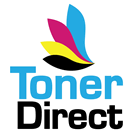There’s a lot that goes on between clicking “print” and holding your high-quality printed page. Today, one of the HP Supplies Guys, takes us under the hood of the LaserJet printer to teach us more about the tech behind toner.
Providing the best LaserJet printing devices and toners in the world is no small task. It requires an immense amount of sophisticated technology and it’s something I’m always impressed by. Did you know, for example, that about 70% of the imaging technology needed is housed not in the body of the actual printer, but in the cartridge itself? It’s the core part of the operation. Here’s a little background to help you understand all that goes into an HP toner cartridge. Ten of my favorite facts about toner:
- Xerography or electrophotography was invented in the late 1930s. This is the grandfather-tech of laser printing and photo copying. The first image from an electrophotography device was formed in 1938 and the technology was eventually commercialized in 1950. In the more than 25 years that HP has been delivering LaserJet devices we have continued to deploy and innovate on this basic technology.
The first image from an EP device was formed in 1938 (shown above). The implementation of Dry EP has had many variations over the years as different technologies have developed, yet the basic process remains the same. Simply put, EP is the process of using electrostatic charge to move toner onto a piece of paper. Using a laser, a photoconductive drum is positively charged in areas that will create an image. The negatively charged toner is attracted to the positive latent image on the drum and then is transferred to the paper where a transfer roller applies a positive charge to the underside of the paper which attracts the negatively charged toner. The last step is fusing where both heat and pressure are applied to the page to adhere the toner to the paper.
- In contrast to the liquid printer ink, toner is made from solid particles. These particles are melted to the page with the heat and pressure of a fuser.
- In the early days of laser printing, toner was made of simple carbon powder. Over the years, printing quality has been improved with the addition of plastic or wax polymers making it more affordable, able to hit higher print speeds and allows the customer to use on a wide range of print media.
- Toner particles move between the components, within the cartridge, through static electricity. Each toner particle is engineered to hold a specific charge and travel with extreme precision.
- Toner powder is manufactured in one of two ways, by grounding or by growing. In conventional toner, the ingredients are compounded into a slab, then ground or pulverized into a fine powder, resulting in toner granules of varying size and shape. In a chemically produced toner (CPT), particles are grown through a chemical process to the desired size and shape. This consistent size and shape enables improved toner charging, toner placement, and wear characteristics and ultimately provides improved print quality, optimized toner usage, and lower energy use.
- When it comes to toner particles, getting to a uniform size and shape is most desirable. This enables consistency in toner placement, wear characteristics and toner charge, which lead to optimized toner and energy use and improved print quality. This is why some non-hp toners will make the entire background of the page look grey – all of the toner particles that are too small will jump across to the page and cause a defect.
- In the early 1980s, the use of personal computers caught on, setting the stage for HP’s introduction of one of the very first laser printers targeted at the mass market- the Original HP LaserJet. Released in 1984, the original HP LaserJet printed eight pages per minute, weighed 71 pounds and cost $3,495. This product was revolutionary in that it was the world’s first desktop laser printer and delivered PQ that far exceeded the competition at the time.
- HP toner formulations vary from printer to printer because toners must meet the specific performance requirement of each and every different printing system (e.g. print speed, fusing temperatures and physical size of the printer). There is not one toner that fits all devices. HP has mastered the process of creating specific toner particles engineered to the precise specifications of each printing device.
- Remanufactured toner cartridges, used cartridges that are refilled with generic toner, are usually assembled by hand, which may expose you to messy leaks due to faulty seals. This is where the reliability of Original HP toners becomes so apparent. A study conducted by Photizo Group showed that 42% of the customers who used non-HP cartridges experienced problems with those cartridges, while original HP cartridges posed no problems. (From a 2012 NA Photizo Group/Lyra Research study, commissioned by HP. Results based on interviews with 100 HP Authorized Service Providers who have at least 6 months’ experience servicing HP monochrome and color LaserJet printers, and have last done so within the previous 12 months.)
- The amount of research and development behind each Original HP toner cartridge is staggering. In fact, it takes approximately150 million toner particles just to cover about 5 percent of a page!
HP designs its printers, toners and paper to work together to provide superior results, but ultimately the accurate application of toner to your prints depends on the original HP toner particles. What we’re able to provide today is the result of years of development and we continue innovating and developing with quality, reliability and the environment in mind every step of the way!

